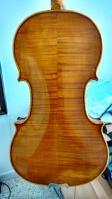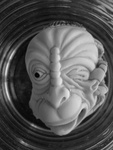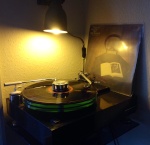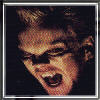NVA
+2
luisbustilloojeda
campo selice
6 participantes
Página 1 de 1.
 NVA
NVA
Alguien ha escuchado algo de esta firma?los que sabeis de electronica estais de acuerdo con la filosofia de esta marca?gracias

campo selice- Cantidad de envíos : 1994
Edad : 49
Localización : ALICANTE
Fecha de inscripción : 11/05/2009
 Re: NVA
Re: NVA
pos yo mismo, 
lo malo es que fue hace muchos años y no recuerdo muy bien,encima era un pre pasivo,osea que nada de añadir algo a la señal.
y no recuerdo muy bien,encima era un pre pasivo,osea que nada de añadir algo a la señal.
auque hacia algunos"paratos"realmente precioso,(Otros no eran mu espartanos),una linea con un ampli,creo y un cd,statament creo que se llamaban
supongo,es un suponer que como todo buen ingles,buenas maneras,musicales y nada llamativos,en el buen sentodo",en cuanto a sonido
alguna critica habra por la red,imvetiga y suerte con ello
saludos
luis
p.d.por de pronto
sacado de aqui
http://www.nene-valley-audio.com/
"NVA, which used to stand for Nene Valley Audio, is a British company that has been in business for over 15 years, happily making amplifiers that do not conform to the usual trends.
Mr. Richard Dunn, the owner and founder of NVA, used to design pro amps for rock bands and so forth back in the 1970's with his company then being known as Tresham Audio. However, he never thought that pro amplifiers were hi-fi amplifiers so far as sound was concerned, and when the opportunity arose to start NVA he indulged himself in going for sound rather than ruggedness in his amplifier designs.
One of the things that beset him at first was that his cased prototype amplifiers never sounded as good as the experimental breadboard setups, which led him to investigate case design. Remember, we are talking years before the high-end community worried about such things.
So he discovered that steel was no good as a case material, and that even aluminum produced circulating eddy currents (that's how a utility electric meter's little disc turns around, by the way). Screws holding circuit boards to the chassis caused problems as well. The eventual solution was to use a combination of three materials, anodized aluminum, plexiglass and medite. Where aluminum pieces abut one another, the anodizing prevents electrical continuity, much as individual metal strips in a transformer core are individually painted to minimize circulating currents. Instead of screws to hold down the circuit boards and output transistors, he turned to structural adhesives.
Then there was wire, and the associated dielectric effects from the covering that is usually applied. Obviously, Teflon is nice, but it is expensive. Even better is nothing at all, and so Mr. Dunn embarked on this approach, ending up with a large gauge tinned copper wire used to carry all the power supply currents, output currents, and a really rugged grounding system. As a compromise, the inputs are wired with silver-coated stranded copper wire with a PTFE (Teflon) coating.
The result, when one peers into an NVA amplifier, is like nothing you've seen before. Large hunks of tinned copper wire float at various heights around the amplifier, making it truly unique. And the only screw in sight is the one holding the transformer to the thick aluminum base.
The circuit boards don't look like the latest all-dressed computer types with green coating and carefully marked component locations. They are free of that stuff and the dielectric effects they cause. The circuit tracks on the boards are hand-designed with no sharp curves anywhere. The layout may look untidy, but each piece is where it is, because that's where it sounded best. And you will note that the bypass capacitors used are very expensive Wima 0.1 micro-farad polystyrene types, generally acknowledged as being second best only to Teflon.
Then there was the problem of volume controls (potentiometers). Ceramic metallic (cermet) types are the best unless you go mad with expense, but they only come in linear, not logarithmic form, and worst of all, they can be a bit scratchy to the touch when turned. Well, you're going to have to get used to them, because every NVA amplifier has one. The latest ones from France don't seem too bad anyway in the scratchiness department.
What about output inductors following the output transistors? They're usually included to "pre-load" the amplifier to deal with capacitive speaker cable. No good. Out they went. Now you have to be careful with the speaker wire you choose, because low capacitance is a prerequisite, and bi-wiring which would double capacitance, is out as well.
Naturally, Mr. Dunn then developed some speaker wire with incredibly low capacitance, called LS1. You don't have to use it, just use a low capacitance cable, but it really shows how an NVA amplifier can sound, and adding it to your present system will wake it up as well. Inside each braided sleeve are 7 silver-alloy teflon-covered solid-core wires, and there is a separate cable for positive and negative, meaning 4 cables for a stereo system. It's by no means the most expensive cable out there, and you don't have to buy it twice to bi-wire!
So what we have is a truly unique amplifier which requires some owner involvement, and quality sound that you simply cannot purchase for less. One of the biggest surprises for an NVA customer will be to find out how "quiet" their amplifier is. Virtually zero hiss and hum with no signal, even with your ears pressed up to the speaker.
NVA does not produce glossy brochures, has scanty literature and does not believe in vast marketing campaigns of any kind. "
lo malo es que fue hace muchos años
 y no recuerdo muy bien,encima era un pre pasivo,osea que nada de añadir algo a la señal.
y no recuerdo muy bien,encima era un pre pasivo,osea que nada de añadir algo a la señal.auque hacia algunos"paratos"realmente precioso,(Otros no eran mu espartanos),una linea con un ampli,creo y un cd,statament creo que se llamaban
supongo,es un suponer que como todo buen ingles,buenas maneras,musicales y nada llamativos,en el buen sentodo",en cuanto a sonido
alguna critica habra por la red,imvetiga y suerte con ello
saludos
luis
p.d.por de pronto
sacado de aqui
http://www.nene-valley-audio.com/
"NVA, which used to stand for Nene Valley Audio, is a British company that has been in business for over 15 years, happily making amplifiers that do not conform to the usual trends.
Mr. Richard Dunn, the owner and founder of NVA, used to design pro amps for rock bands and so forth back in the 1970's with his company then being known as Tresham Audio. However, he never thought that pro amplifiers were hi-fi amplifiers so far as sound was concerned, and when the opportunity arose to start NVA he indulged himself in going for sound rather than ruggedness in his amplifier designs.
One of the things that beset him at first was that his cased prototype amplifiers never sounded as good as the experimental breadboard setups, which led him to investigate case design. Remember, we are talking years before the high-end community worried about such things.
So he discovered that steel was no good as a case material, and that even aluminum produced circulating eddy currents (that's how a utility electric meter's little disc turns around, by the way). Screws holding circuit boards to the chassis caused problems as well. The eventual solution was to use a combination of three materials, anodized aluminum, plexiglass and medite. Where aluminum pieces abut one another, the anodizing prevents electrical continuity, much as individual metal strips in a transformer core are individually painted to minimize circulating currents. Instead of screws to hold down the circuit boards and output transistors, he turned to structural adhesives.
Then there was wire, and the associated dielectric effects from the covering that is usually applied. Obviously, Teflon is nice, but it is expensive. Even better is nothing at all, and so Mr. Dunn embarked on this approach, ending up with a large gauge tinned copper wire used to carry all the power supply currents, output currents, and a really rugged grounding system. As a compromise, the inputs are wired with silver-coated stranded copper wire with a PTFE (Teflon) coating.
The result, when one peers into an NVA amplifier, is like nothing you've seen before. Large hunks of tinned copper wire float at various heights around the amplifier, making it truly unique. And the only screw in sight is the one holding the transformer to the thick aluminum base.
The circuit boards don't look like the latest all-dressed computer types with green coating and carefully marked component locations. They are free of that stuff and the dielectric effects they cause. The circuit tracks on the boards are hand-designed with no sharp curves anywhere. The layout may look untidy, but each piece is where it is, because that's where it sounded best. And you will note that the bypass capacitors used are very expensive Wima 0.1 micro-farad polystyrene types, generally acknowledged as being second best only to Teflon.
Then there was the problem of volume controls (potentiometers). Ceramic metallic (cermet) types are the best unless you go mad with expense, but they only come in linear, not logarithmic form, and worst of all, they can be a bit scratchy to the touch when turned. Well, you're going to have to get used to them, because every NVA amplifier has one. The latest ones from France don't seem too bad anyway in the scratchiness department.
What about output inductors following the output transistors? They're usually included to "pre-load" the amplifier to deal with capacitive speaker cable. No good. Out they went. Now you have to be careful with the speaker wire you choose, because low capacitance is a prerequisite, and bi-wiring which would double capacitance, is out as well.
Naturally, Mr. Dunn then developed some speaker wire with incredibly low capacitance, called LS1. You don't have to use it, just use a low capacitance cable, but it really shows how an NVA amplifier can sound, and adding it to your present system will wake it up as well. Inside each braided sleeve are 7 silver-alloy teflon-covered solid-core wires, and there is a separate cable for positive and negative, meaning 4 cables for a stereo system. It's by no means the most expensive cable out there, and you don't have to buy it twice to bi-wire!
So what we have is a truly unique amplifier which requires some owner involvement, and quality sound that you simply cannot purchase for less. One of the biggest surprises for an NVA customer will be to find out how "quiet" their amplifier is. Virtually zero hiss and hum with no signal, even with your ears pressed up to the speaker.
NVA does not produce glossy brochures, has scanty literature and does not believe in vast marketing campaigns of any kind. "

luisbustilloojeda- Cantidad de envíos : 3734
Localización : santander
Fecha de inscripción : 14/12/2008
 Re: NVA
Re: NVA
Gracias,de esa pagina es donde he leido cosas,como no usar tornillos y demas.Yo a esos niveles me pierdo y de lo que he leido lo ponen muy bien,aunque he visto poco.Saludos

campo selice- Cantidad de envíos : 1994
Edad : 49
Localización : ALICANTE
Fecha de inscripción : 11/05/2009
 Re: NVA
Re: NVA
Hola.
Actualmente les he perdido la pista, aunque parece que continúan con su misma filosofía. En su momento la serie Statement era un referente por sus atrevidísima estética y por la calidad de su sonido, muy natural y agradable.


Salud!
César
Actualmente les he perdido la pista, aunque parece que continúan con su misma filosofía. En su momento la serie Statement era un referente por sus atrevidísima estética y por la calidad de su sonido, muy natural y agradable.


Salud!
César

César- Cantidad de envíos : 7636
Localización : Las Palmas de Gran Canaria
Fecha de inscripción : 14/12/2008
 Re: NVA
Re: NVA
Richard Dunn es un tipo bastante idiosincrático, que tiene una forma algo agresiva de defender sus ideas. Ahora le ha dado por el plástico, que defiende frente al metal antes todos y cada uno. Yo he tenido algún escarceo con él en el foro Zerogain, donde suele participar a menudo.
No por ello dejo de reconocer que sus productos son interesantes. Yo solo he escuchado un previo pasivo suyo y me gustó bastante, pero no tengo una opinión lo suficientemente formada como para hacer una crítica medianamente seria.
Si te diriges a él personalmente, seguro que te da toda la información que quieras -probablemente incluso más !
!
Saludos,
Vincula
PS. Por cierto, qué tal esas Beyma 8AGN? Sonando o en sus cajas, camposelice ?
?
No por ello dejo de reconocer que sus productos son interesantes. Yo solo he escuchado un previo pasivo suyo y me gustó bastante, pero no tengo una opinión lo suficientemente formada como para hacer una crítica medianamente seria.
Si te diriges a él personalmente, seguro que te da toda la información que quieras -probablemente incluso más
Saludos,
Vincula
PS. Por cierto, qué tal esas Beyma 8AGN? Sonando o en sus cajas, camposelice
Última edición por Vincula el Lun 6 Dic 2010 - 20:23, editado 1 vez

Vincula- Cantidad de envíos : 1430
Localización : Copenhague, DK
Fecha de inscripción : 19/07/2010
 Re: NVA
Re: NVA
preciosos!!!
a esa serie me referia
saludos
Luis
P.D:Joer que alegria mas grande Cesar el poder volverte a leer!!!!! ,perdon por el off
,perdon por el off 

a esa serie me referia
saludos
Luis
P.D:Joer que alegria mas grande Cesar el poder volverte a leer!!!!!


luisbustilloojeda- Cantidad de envíos : 3734
Localización : santander
Fecha de inscripción : 14/12/2008
 Re: NVA
Re: NVA
Hola Luis.
Yo también me alegro de estar de nuevo por aquí con los viejos amigos.
Un fuerte abrazo.
César
Yo también me alegro de estar de nuevo por aquí con los viejos amigos.
Un fuerte abrazo.
César

César- Cantidad de envíos : 7636
Localización : Las Palmas de Gran Canaria
Fecha de inscripción : 14/12/2008
 Re: NVA
Re: NVA
Gracias,Vincula tienes un mp 

campo selice- Cantidad de envíos : 1994
Edad : 49
Localización : ALICANTE
Fecha de inscripción : 11/05/2009
 Re: NVA
Re: NVA
lo que no entiendo es eso de usar solo sus previos en sus etapas y los cables que fabrican ellos ya que tienen que ser de baja capacitancia creo.......

campo selice- Cantidad de envíos : 1994
Edad : 49
Localización : ALICANTE
Fecha de inscripción : 11/05/2009
 Re: NVA
Re: NVA
César escribió:Hola Luis.
Yo también me alegro de estar de nuevo por aquí con los viejos amigos.
Un fuerte abrazo.
César
Dieciocho los ojos!!!!! Mardito zingamocho,que nos tienes abandonadoooos!!!!!!!

RE-NOIR- Cantidad de envíos : 3801
Edad : 50
Localización : Badajoz
Fecha de inscripción : 16/01/2009
 Re: NVA
Re: NVA
Hola Renegrío.
Seguro que los tengo abandonados, seguro. Anda que no la estáis liando parda por tierras extremeñas sin encomendarse a santo alguno, que incluso ya a estas asirocadas islas llegan noticias de vuestras hazañas, ya sea con los mosquitos tigres como con el licor café o el vodka caramelo.

Un abrazo, zingamocho.
César
Seguro que los tengo abandonados, seguro. Anda que no la estáis liando parda por tierras extremeñas sin encomendarse a santo alguno, que incluso ya a estas asirocadas islas llegan noticias de vuestras hazañas, ya sea con los mosquitos tigres como con el licor café o el vodka caramelo.
Un abrazo, zingamocho.
César

César- Cantidad de envíos : 7636
Localización : Las Palmas de Gran Canaria
Fecha de inscripción : 14/12/2008
 Re: NVA
Re: NVA
Este es el foro, esponsorizado y promovido por Richard. Como lo han baneado de casi todos los foros él pensó que mejor seria poner el suyo. Su nick es Dr. Bunsen Honeydew y es un tio muy entendido y entretenido pero a veces le traicionan las formas. El solo vende por ebay ya que opina que las tiendas de alta fidelidad tienen los dias contados y en el futuro los hobbies especializados se fomentarán en internet solamente. Yo tengo sus i/cs sound pipes solamente y muy bien pero sus amplis son muy interesantes. Es de los grandes "enfants terrible" de la industria britanica.
Le echa mucha culpa del estado actual de la industria al daño hecho por el eje Linn/naim en los 80 cuando su marketing pisoteó a mucha gente que no estaba de acuerdo con ellos. ¿ Y quién le pone el cascabel al gato ?............
http://thehifisubjectivist.noadforum.com/viewforum.php?f=2&st=0&sk=t&sd=d
Le echa mucha culpa del estado actual de la industria al daño hecho por el eje Linn/naim en los 80 cuando su marketing pisoteó a mucha gente que no estaba de acuerdo con ellos. ¿ Y quién le pone el cascabel al gato ?............
http://thehifisubjectivist.noadforum.com/viewforum.php?f=2&st=0&sk=t&sd=d
Chris- Cantidad de envíos : 2227
Localización : Tenerife
Fecha de inscripción : 08/05/2009
Página 1 de 1.
Permisos de este foro:
No puedes responder a temas en este foro.
 Índice
Índice Registrarse
Registrarse Conectarse
Conectarse
